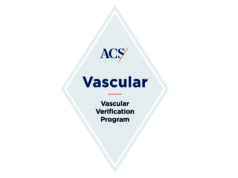In a previous editorial I outlined the problem with performance measures that demand that we incorporate the patient into our decision-making process. From the responses received I have found that most vascular surgeons do indeed attempt to explain their choice of procedure and outline the various risks, consequences, and alternatives. However, it is apparent that both patients and physicians may no longer have control over their decisions. As a group, physicians and surgeons are increasingly being marginalized by entities that are deciding, without our input, what we can do, to whom, and with what.
This is especially so when it involves the technologies that we employ daily – or would like to employ. Thus, if we are not given the opportunity to use a technology we believe most appropriate for our patient, then the patient is also removed from the decision-making process.
Following trips overseas and with meeting vascular surgeons at the World Federation of Vascular Associations, I am now aware that our marginalization has become a universal problem. Because it is not only hospital administrators but insurance carriers, industry, and government agencies that are involved in restricting our freedom of choice. Although cost is usually the limiting factor, sometimes perverse incentives are in effect, and these may differ depending not only in which hospital a surgeon practices but also in which state or country the surgeon resides.
Unfortunately, most surgeons are now accustomed to having hospital chief financial officers (CFOs) refuse to purchase devices that these administrators consider too expensive despite evidence demonstrating clinical superiority. In the U.S. hospitals are compensated for a procedure irrespective of whether it was performed because of a failed prior surgery or endovascular intervention.
For example, if a patient has a prosthetic infra-inguinal bypass that fails within a few months, insurance companies and Medicare will still pay for the subsequent revascularization. Strangely, it would actually be in the hospital’s financial interest that the original procedure require a revision! Accordingly, there is no incentive for a hospital to purchase grafts or endovascular devices with superior short- or long-term results, especially if they are more costly. Is it any wonder then that health care expenses in this country are spiraling out of control?
Surely vascular surgeons would not be equally motivated to use an inferior product simply to be able to bill for a repeat procedure at a later date? But are some of our colleagues or those in other specialties paying attention to the paucity of data supporting long-term outcomes of some of the new endovascular procedures such as atherectomy? Do they really care that these devices may not offer anything more than a few months of palliation necessitating that the patient make a return trip to a lucrative outpatient facility?
On the other hand a health maintenance organization (HMO) or government that pays for all health- related issues of its populace would be inclined to pay for a device that offers long-term efficacy provided that it proves to be cost effective. For example an expensive drug-eluting stent that resists restenosis may still be worth funding if it prevents the need for re-intervention. However, if the result is that every covered patient will henceforth be treated with these costly stents, the overall cost may prove uneconomical and the use of these stents will be disallowed.Moreover, I am sure most surgeons also would be amazed to learn that the availability of a technology may be limited by restrictions on foreign trade and import/export regulations. Some countries insist that devices, and even their packaging, be made in part or totally in that country. Many countries now require that their own equivalent of the FDA analyze the safety or benefit of new medical devices rather than relying on the CE mark in Europe or the U.S. FDA. These regulations may make it economically unfeasible for companies to do business in that country. Thus vascular surgeons in those countries may be denied access to devices produced by market-leading U.S .companies.
Industry also controls availability. A certain recent device was quite effective in the few patients in whom I used it. But apparently it proved to be commercially nonviable and was discontinued. The question is – how many other potentially useful devices have never made it into production?
So how do we fight back against these restrictions? Perhaps the following stratagems may work. If you practice in a city with at least two hospitals, use only the hospital that provides you with all the tools you need. Understand that vascular surgical procedures are profitable for most hospitals. As a result the second hospital will soon notice your absence and may be willing to negotiate. If you are meeting resistance from an ACO, make sure when you present the reasons for requesting a new device that you can also provide valid long-term cost-effective data.
Insurance carriers and government institutions will be more difficult to convince. Accordingly, utilize the collective power of a state or national vascular Society. When dealing with trade embargoes perhaps the European Society for Vascular Surgery, the Society for Vascular Surgery, or the World Federation of Vascular Societies may be able to assist. Appealing to the public through newspaper articles may also be beneficial. It’s time for physicians and surgeons to protest our continued marginalization. After all who knows better which device, drug, or treatment to use? The doctor or the recently graduated MBA? On behalf of our patients we need to take a stand.













